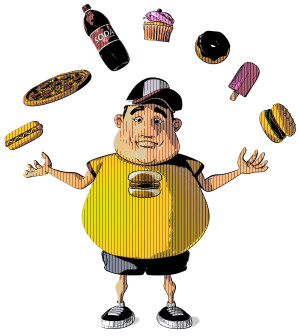- Skip Storing This Everyday Product in the Fridge Door
- Green Tea + B3 Pairing May Boost Brain Health
- Navigating Your Midlife Crisis: Embracing New Possibilities
- City Raccoons Showing Signs of Domestication
- Mapping the Exposome: Science Broadens Focus to Environmental Disease Triggers
- One Week Less on Social Media Linked to Better Mental Health
- Your Brain Changes in Stages as You Age, Study Finds
- Some Suicide Victims Show No Typical Warning Signs, Study Finds
- ByHeart Formula Faces Lawsuits After Babies Sickened With Botulism
- Switch to Vegan Diet Could Cut Your Greenhouse Gas Emissions in Half
Marketing of Unhealthy Foods Still Common in U.S. Schools: Study


Although there has been progress in cutting out the marketing of junk food to schoolchildren, many American students are still exposed to in-school marketing of less-than-nutritious fare, a new study finds.
One nutritionist wasn’t surprised by the finding.
“There is a great deal of marketing to schoolchildren, not only in vending and soda machines, but also at school events, sporting events and sponsored awards ceremonies,” said Karen Congro, a registered dietitian and director of the Wellness for Life Program at the Brooklyn Hospital Center in New York City.
“The fact is that many companies use sophisticated marketing techniques so they are not seen as directly trying to reach them with unhealthy food messages,” said Congro, who was not involved in the new study.
In the new study, researchers analyzed surveys completed by school administrators between 2007 and 2012 in order to determine elementary-, middle- and high-school students’ exposure to “food commercialism” in their schools.
The study found that 24.5 percent of middle-school students and 51.4 percent of high-school students attended schools with company-sold food vending. In 2012, fast food was available at least once a week in schools attended by about 10 percent of elementary-school students, 18 percent of middle-school students and 30 percent of high-school students.
Food coupons were the most frequent type of commercialism, with about 64 percent of elementary-school students being exposed to the practice, according to the study, which was published online Jan. 13 in the journal JAMA Pediatrics.
The percentage of students attending schools with exclusive beverage contracts for specific brands or incentive programs and profits (money gained from beverage sales) decreased from 2007 to 2012, the study found. In 2012, about 3 percent of elementary-school students attended schools with these types of promotions, compared with more than 10 percent in 2007.
About half of middle-school students and nearly 70 percent of high-school students attended schools with beverage-company deals in 2012, compared with 67.4 percent and 74.5 percent, respectively, in 2007.
The new research was conducted by Yvonne Terry-McElrath and colleagues at the University of Michigan, Ann Arbor.
“Although there were significant decreases over time in many of the measures examined, the continuing high prevalence of school-based commercialism supports calls for, at minimum, clear and enforceable standards on the nutritional content of all foods and beverages marketed to youth in school settings,” said Terry-McElrath, a research associate at the university’s Institute for Social Research.
Congro said in-school marketing of less-than-nutritious fare “creates a perception that these products are better for them than they actually are. Because it is in the school environment, it may be perceived by kids as a ‘halo effect,’ or an endorsement by their schools of these products.”
Erin Keane, an outpatient dietitian at Lenox Hill Hospital in New York City, said marketing in schools needs to receive more attention.
“The U.S. Department of Agriculture has established standards to address the types of foods and beverages sold in schools, but nothing yet has been created to address in-school exposure to the marketing of sweetened beverages, fast food and candies,” Keane said. “While I don’t think that simply removing marketing from schools will solve the greater issue, I do think it needs careful thought.”
More information
The U.S. National Library of health has more about child nutrition.
Source: HealthDay
Copyright © 2025 HealthDay. All rights reserved.










